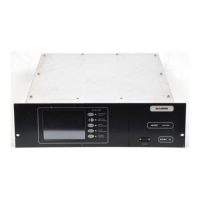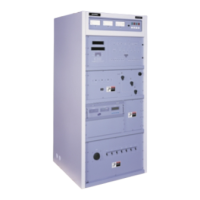• Solder transistor leads and trim.
• Replace blown fuse(s).
C.4.1.2 Checking RF Module Operation
The most common method of troubleshooting an RF amplifier
after a failure is to put the repaired amplifier in a known working
step, i.e. step 1 through 5, and to put the working amplifier where
the failure first occurred. This is known as module swapping and
although it is less conservative, it will quickly tell you whether
the amplifier fault was caused by the position it was in or by the
amplifier itself.
After an RF amplifier has failed, some thought should be given
as to what caused the failure before a replacement or repaired
amplifier is put back in place and the transmitter is turned back
on. For example:
Are the A and the B halves of the amplifier receiving the
proper drive?
Is the amplifier receiving a proper ON/OFF control signal
from the Modulation Encoder?
Did something short at the output of the amplifier?
After the MOSFETs were replaced, isthere something else
on the amplifier that may have been damaged?
Even though most causes for an RF amplifier failure are related
to a power MOSFET breaking down, it is recommended that a
more conservative approach be taken so as not to fail a second
amplifier in the same position or fail the repaired amplifier a
second time.
ForinformationontroubleshootingrepeatedPA Modulefailures,
refer to SECTION VI, Troubleshooting.
DX-25U
C-6 888-2297-002
WARNING: Disconnect primary power prior to servicing.
